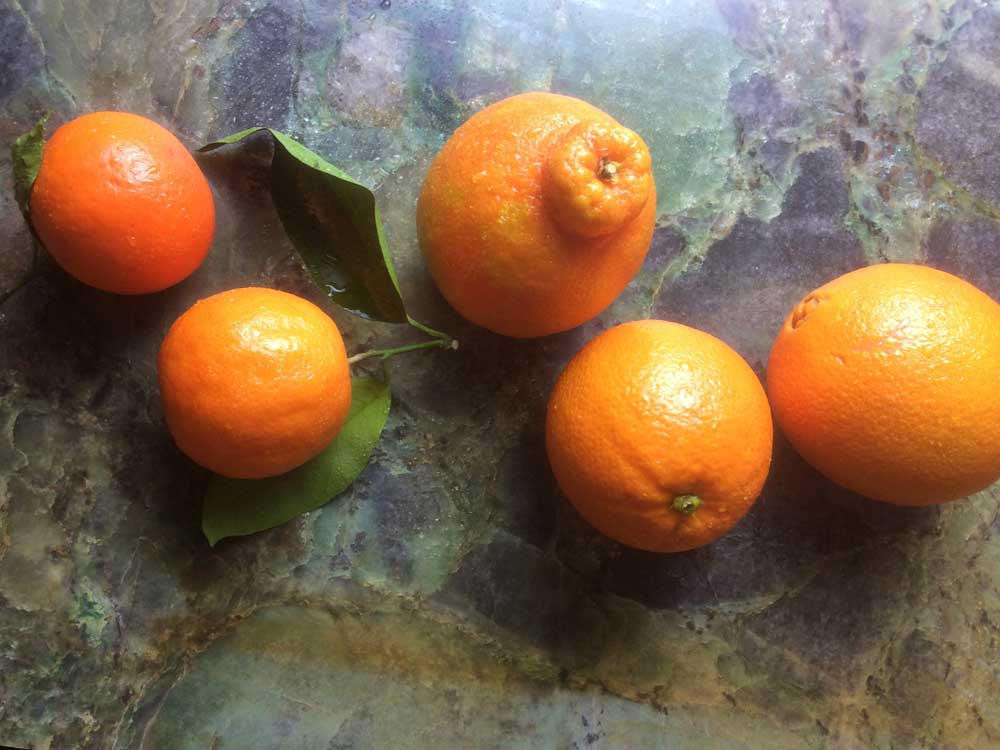Cooking with oranges brings out summer flavors
Published 2:18 pm Thursday, February 2, 2017

- Navel oranges (right), Tangelo (middle) and Tangerines (left). (Jan Roberts-Dominguez / For The Bulletin)
There’s something remarkable about peeling back the skin from a fresh orange in the dead of winter. The pent-up tropical fragrance, once released into the atmosphere of a Pacific Northwest kitchen, is a heady reminder that there are places where jackets needn’t be made of fleece, and a rag-top Mustang opens to a January sky that is more turquoise than gray.
Indeed, this is the time of year when those states that can are dealing in the commerce of shippable sunshine. That would include Florida, California, Arizona and Texas.
Because food has become such a global commodity, it’s easy to forget that something as basic as an orange or a lemon, or a tangerine, is just as seasonal as your backyard summer tomatoes. And this is their season. So for the next many weeks — into February and March, actually — why not take advantage of such domestic treasures as juicy-sweet navel oranges, charming little tangerines, ruby red grapefruits and richly aromatic tangelos?
You don’t have to give it much thought, just bring them into your kitchen and enjoy how they provide healthy variety to your winter-dulled palate. For instance, have you ever made juice from a bowl of tangelos? I did that once, turned about half a dozen tangelos into juice. The flavor was quite different than orange juice; slightly sweeter and much richer. What a treat.
If you are a bit curious about these delightful fruits, why not start with the common navel orange? Did you ever wonder who put the navel in navel oranges?
Well, according to orange historian Vince Moses of Riverside, California, that appearance of a navel on the outside of the orange is the result of a mutation.
The mutation, he noted, created a conjoined twin on the developing fruit, just opposite the stem end.
It was a Presbyterian missionary in the mid-1800s who came upon this navel-like orange growing at his monastery in Bahai, Brazil, and thought it unusual. He was further intrigued because not only did it sport a belly button, but upon peeling and separating the segments within he discovered the baby orange lurking inside. Plus, it was extremely sweet with no seeds.
Knowing this was something quite special, the missionary propagated some trees from cuttings of this unique orange and sent a sampling to William Saunders at the USDA in Washington.
In 1873, Saunders sent two starter trees to Eliza Tibbets, a citrus grower in Riverside, to see if they would grow.
Well, those trees produced incredible oranges — larger and more flavorful than any of the citrus of its time — and literally launched the California commercial citrus industry.
Today, nearly all of the navel oranges produced in the state are descendants of the original trees grown by Tibbets.
In celebration of citrus season, I’m providing a small collection of salads that feature this juicy and nutritious winter treat. Feel free to take these recipes and adjust as needed to make them your own.
— Jan Roberts-Dominguez is a Corvallis food writer, artist, and author of “Oregon Hazelnut Country, the Food, the Drink, the Spirit,” and four other cookbooks. Readers can contact her by email at janrd@proaxis.com, or obtain additional recipes and food tips on her blog at www.janrd.com.
It was a Presbyterian missionary in the mid-1800s who came upon this navel-like orange growing at his monastery in Bahai, Brazil, and thought it unusual. He was further intrigued because not only did it sport a belly button, but upon peeling and separating the segments within he discovered the baby orange lurking inside. Plus, it was extremely sweet with no seeds.
Tangelo and Mixed Greens Salad with Toasted Hazelnuts
Makes 4 servings
1 qt tender, young salad greens
½ C toasted hazelnuts, coarsely chopped
2 tangelos, peeled and separated into segments
1/4 red onion, sliced into thin strips
Tangy Tangelo and Balsamic Dressing (recipe follows)
Shredded Parmesan
In a salad bowl, combine the greens with the hazelnuts and tangelos. Add enough dressing to thoroughly coat the leaves and toss. Add a handful of shredded Parmesan and toss again before serving.
TANGY TANGELO AND BALSAMIC DRESSING: In a small bowl, whisk together 1/4 cup freshly-squeezed tangelo juice, 1 tablespoon balsamic vinegar, 1 teaspoon Dijon mustard, 1 teaspoon brown sugar, and 1 teaspoon grated tangelo rind. Whisk in 3 to 4 tablespoons extra-virgin olive oil and 2 tablespoons finely minced green onion, a heaping 1/4 teaspoon salt, and a scant 1/4 teaspoon freshly ground black pepper; adjust flavorings and chill until use. Makes about ½ cup of dressing.






